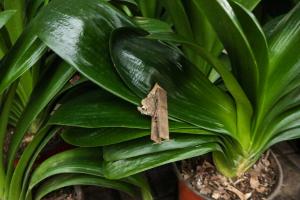Introduction
Palm trees are one of the most iconic and recognizable plants in the world. With their long, slender trunks and feathery fronds, they are a fixture in tropical and subtropical landscapes. But what category of plant do palm trees belong to? Are they trees or something else entirely? In this article, we will explore the answer to this question in detail.
Palm Trees: Are They Trees?
Despite their name, palm trees are not actually trees at all. Instead, they belong to the plant family Arecaceae, which is composed of over 2,500 species. Palms share some similarities with trees, such as a woody stem and the ability to grow to great heights. However, they differ from trees in several key ways.
The Anatomy of a Palm Tree
One of the main differences between a palm tree and a tree is the way their stems are structured. Palm trees do not have branches like trees do. Instead, they have a single stem, or trunk, that grows straight up from the ground. The trunk of a palm tree is also unique in that it is made up of multiple layers of vascular tissue that run parallel to each other.
At the top of the trunk of a palm tree, a cluster of fronds grows out. These fronds are the leaves of the plant and are responsible for photosynthesis. Unlike typical leaves, palm fronds are usually large and fan-like in shape, with many segments. This unique leaf structure is one of the factors that makes palm trees so distinctive.
The Different Types of Palms
As mentioned earlier, there are over 2,500 species of palms spread across the world. These palms come in a wide range of shapes and sizes and are adapted to different climates and environments. Some of the most common types of palms include:
Date palms: These palms are grown for their sweet, edible fruit, which is often dried and used in cooking.
Coconut palms: As the name suggests, this type of palm is grown for its delicious and nutritious coconut fruit.
Areca palms: These palms are commonly grown as ornamental plants due to their attractive foliage.
Queen palms: This type of palm is known for its slender trunk and delicate-looking fronds.
These are just a few examples of the many different types of palms that exist. Palms can be found growing in almost every part of the world, from the rainforests of South America to the deserts of the Middle East.
The Economic Importance of Palms
Palms have been an important part of human culture and history for thousands of years. In addition to providing food and shade, palms have been used for a wide range of purposes, including:
Building materials: The wood of certain palms, such as the Cocos nucifera, is used to make furniture and other objects.
Oil production: The fruit of certain palms, such as the oil palm, is used to produce cooking oil, biofuel, and other products.
Cultural significance: Palms have played an important role in the culture and traditions of many societies, particularly those in tropical regions.
Today, palms continue to be an important part of the global economy and are cultivated for a range of commercial purposes. They are also widely grown as ornamental plants for their unique beauty and attractiveness.
Conclusion
So, what category of plant is a palm tree? While they are sometimes referred to as trees, palm trees are actually more closely related to grasses and bamboo than they are to other trees. Despite this, they occupy a prominent place in human culture and society and are an important source of food, materials, and beauty in many parts of the world.

 how many times do yo...
how many times do yo... how many planted tre...
how many planted tre... how many pine trees ...
how many pine trees ... how many pecan trees...
how many pecan trees... how many plants comp...
how many plants comp... how many plants can ...
how many plants can ... how many plants and ...
how many plants and ... how many pepper plan...
how many pepper plan...

































